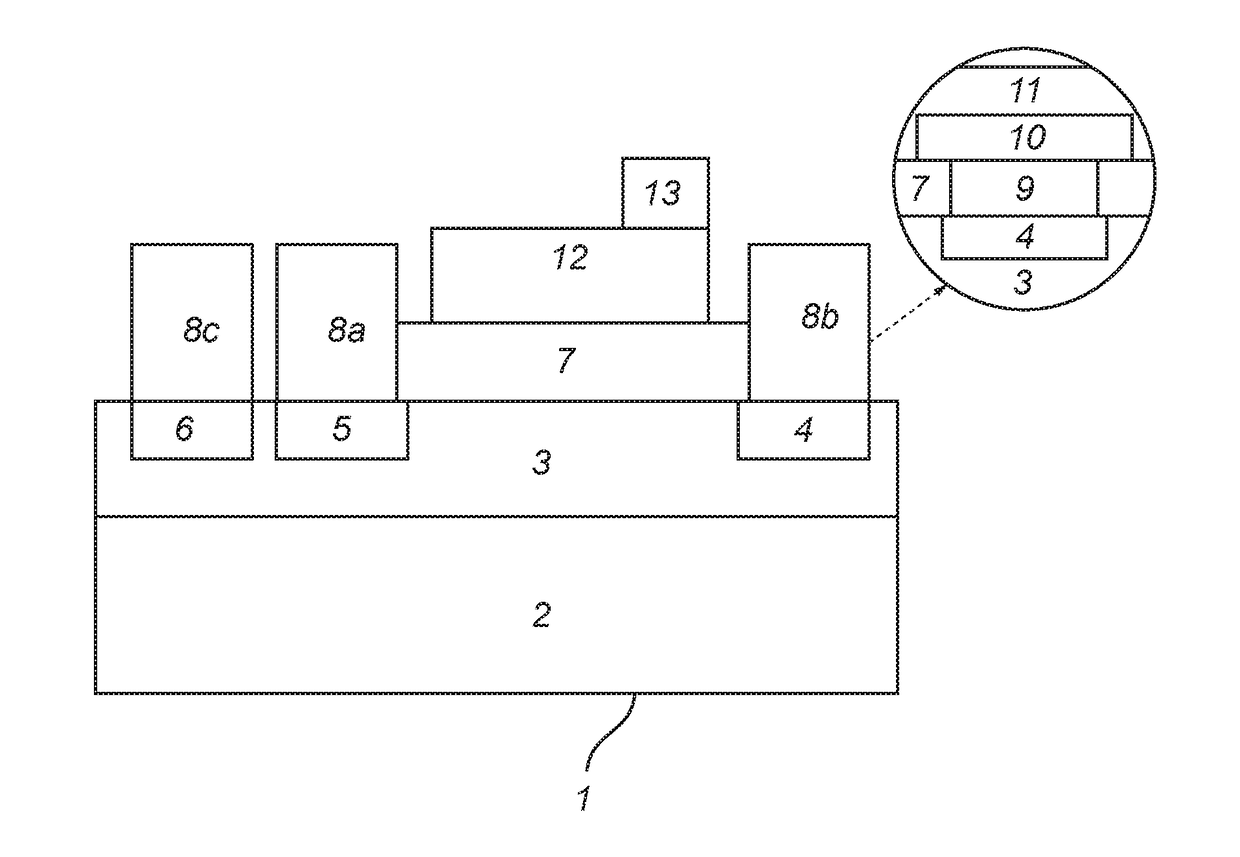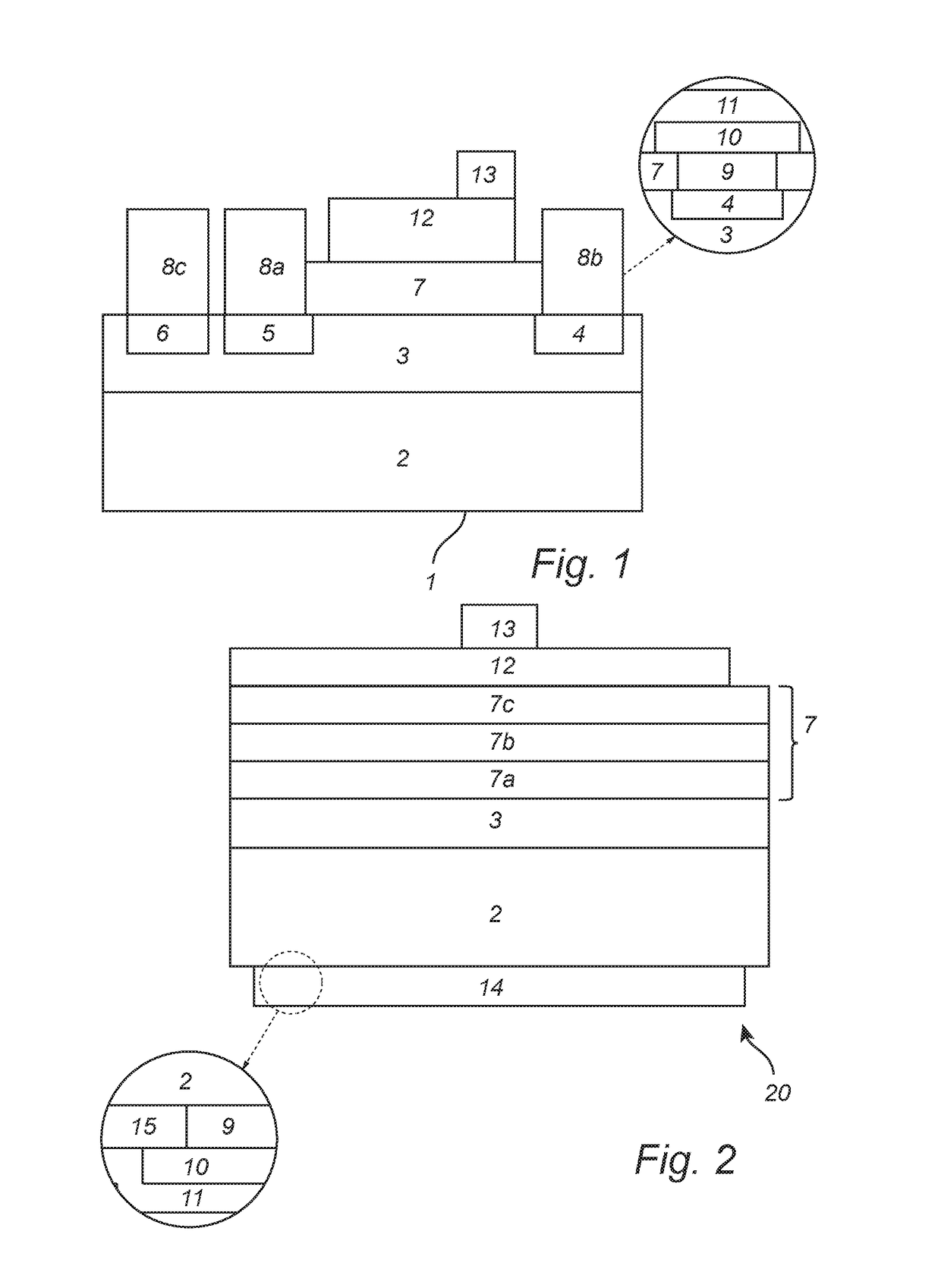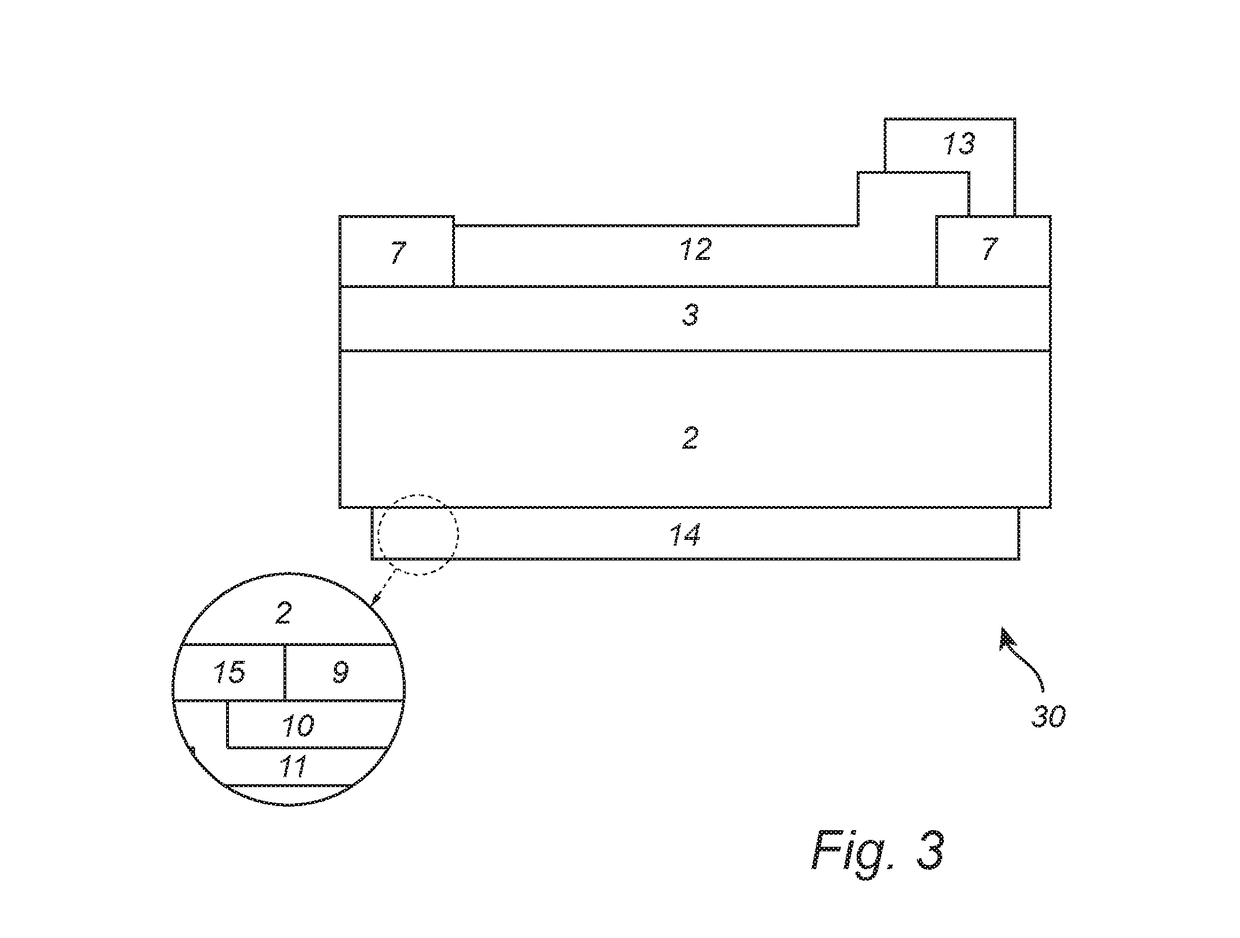Silicon carbide based field effect gas sensor for high temperature applications
a gas sensor and field effect technology, applied in the field of silicon carbide (sic) based field effect gas sensor, can solve the problems of incomplete combustion of fuel, incomplete oxidation of hydrocarbon species and co, and general emission of substances such as nitrogen oxides
- Summary
- Abstract
- Description
- Claims
- Application Information
AI Technical Summary
Benefits of technology
Problems solved by technology
Method used
Image
Examples
Embodiment Construction
[0044]FIG. 1 displays an example of a field effect gas sensor of the MOSFET / MISFET type 1 according to an embodiment of the present disclosure. The field effect gas sensor of the MOSFET / MISFET type 1 comprises a semiconductor layer 2 of e.g. n-type doped SiC. On the semiconductor layer 2, an epilayer 3 (also of SiC), of p-type (doping concentration 5−1015 / cm3) is grown to a thickness of approximately 10 μm. In the epilayer, 3 doped regions are created e.g. by ion implantation to form a drain region 4 of n-type, a source region 5 of n-type and a substrate region 6 of p-type (doping concentration approximately −1020 / cm3). On top of the epilayer 3 an electron insulating layer 7 is grown, consisting of e.g. a thermally grown SiO2 layer to an approximate thickness of 500 Å, and an LPCVD deposited layer of silicon nitride (Si3N4) of approximate thickness 250 Å, which is densified to create a thin layer of silicon dioxide on top of the nitride, typically 50 Å.
[0045]Three contact structures...
PUM
 Login to View More
Login to View More Abstract
Description
Claims
Application Information
 Login to View More
Login to View More - R&D
- Intellectual Property
- Life Sciences
- Materials
- Tech Scout
- Unparalleled Data Quality
- Higher Quality Content
- 60% Fewer Hallucinations
Browse by: Latest US Patents, China's latest patents, Technical Efficacy Thesaurus, Application Domain, Technology Topic, Popular Technical Reports.
© 2025 PatSnap. All rights reserved.Legal|Privacy policy|Modern Slavery Act Transparency Statement|Sitemap|About US| Contact US: help@patsnap.com



